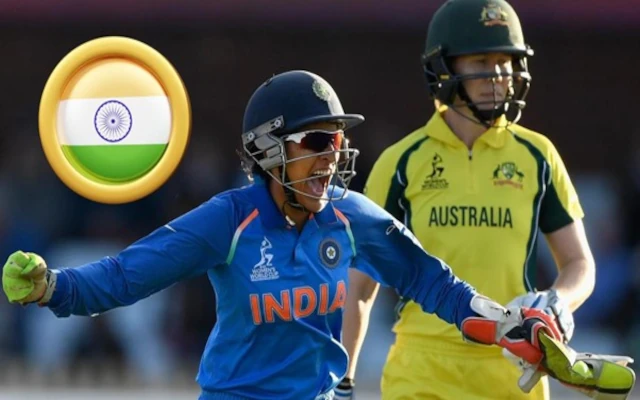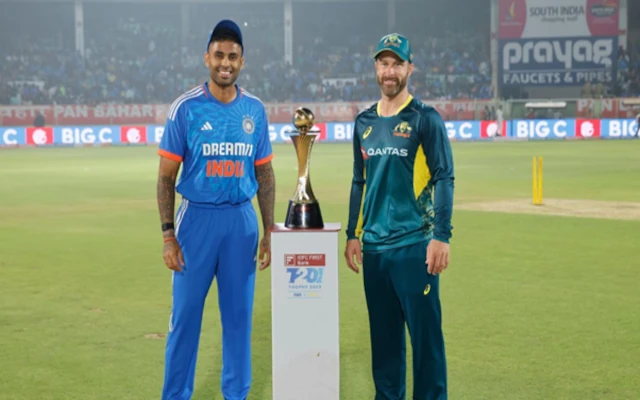Australia vs India Cricket Rivalry – Key Moments and Predictions for the Future
Few sporting rivalries are as captivating as Australia and India cricket encounters. While other sporting tournaments may be as unpredictable as a game of Plinko with outcomes at the whim of chance, the Australia-India cricket rivalry never disappoints with top-level, intelligent games that have characterized the sport’s modern era. The bitter contest between these giants of the cricket world has hosted some of cricket’s most revered moments. What began as a lopsided affair has transformed into cricket’s most compelling rivalry, with both nations having ardent devotees living for the sport.
Historical Context: From Humble Beginnings to Epic Battles
The genesis of the rivalry lies in 1947-48 when India toured Australia for the first time after independence. Those initial matches were firmly one-sided. Australia, under the incomparable Don Bradman, ran through the books against a newly independent country still finding its legs on the global stage.
For generations, the Australian men’s cricket team vs India national cricket team match scorecard read predictably in Australia’s favor. India couldn’t win in Australia, with their first Test win Down Under coming only in 1977-78. The imbalance of power continued well into the 1990s, with Australia emerging as cricket’s undisputed superpower.
The script started changing in the early 2000s. India, with a golden generation of batsmen supported by newfound confidence, began to challenge Australian dominance. What had been a one-way street for so long had now become a closely fought battle with neither side willing to give the other an inch.
Now these teams are on par with each other. India perhaps even has a narrow lead in recent times. Such a transformation from mismatch to level playing field is a testimony to India’s growth as cricket’s money and talent hub, whereas Australia retains their standard of excellence through methodical development programs.
Border-Gavaskar Trophy: The Ultimate Prize
This prestigious award is in the memory of two cricket giants — Allan Border and Sunil Gavaskar — and a reflection of the fiery competitive contest of the two countries. Created in 1996, it raises the stature of bilateral Test series between Australia and India to a commendable level.
India national cricket team has experienced unexpected success in this competitive series. In spite of the reality that Australia has been long-dominant in international cricket history, India has won 10 of 15 contested Border-Gavaskar Trophy series. Not only does the event defy classic cricket convention, but it also indicates that this particular rivalry has a special tendency to exceed expected results.
What makes these series unique? Maybe it’s the differing styles. Australian cricket is used to prioritizing aggression, pace bowling, and mind games tactics. India, on the other hand, depends on wristy batting elegance, spin sorcery, and emotional passion. When these styles clash, cricket magic occurs!
The Border-Gavaskar Trophy has witnessed everything, from heated controversies (Sydney 2008) to sporting moments beyond rivalry. Who can forget the time Andrew Symonds and Harbhajan Singh nearly caused a diplomatic crisis? Or the time Virat Kohli gifted Nathan Lyon a signed jersey despite on-field confrontations? Such instances make this trophy so much more than cricket.
Iconic Test Matches: Drama, Controversy and Brilliance
2001 Kolkata: The Miracle at Eden Gardens
If cricket rivalries have defining moments, the 2001 Eden Gardens Test sits atop that list. Following on 274 runs behind, India seemed destined for humiliation. What followed was cricketing fantasy.
VVS Laxman (281) and Rahul Dravid (180) batted through an entire day without any wicket lost against the Australian bowling attack which had Glenn McGrath, Shane Warne, and Jason Gillespie. Their 376-run partnership gave the impetus to a magnificent turn-around that interrupted Australia’s 16-match win streak. Harbhajan Singh won the game with a 13-wicket match haul in which he captured the first Indian bowler hat-trick in the Test records.
This match changed everything. India discovered their self-belief, and Australia realized their invincibility was an illusion.

2008 Sydney: “Monkeygate” and Near-Diplomatic Incident
Some AUS vs IND encounters transcend sport, and the 2008 Sydney Test stands as the rivalry’s most controversial chapter. Questionable umpiring decisions, Michael Clarke claiming disputed catches, and accusations of racial abuse between Harbhajan Singh and Andrew Symonds nearly caused India to abandon the tour.
The match’s aftermath saw relations between the teams deteriorate to perhaps their lowest point. Only diplomatic intervention prevented a full-blown crisis. Cricket, suddenly, had implications beyond boundary ropes.
2020-21 Brisbane: Fortress Breached
Australia had not been defeated in a Test at the Gabba since 1988 — a 32-year grip. India, missing their skipper Virat Kohli and with a bowling attack of net bowlers due to injuries, did the unthinkable. Chasing 328 on the final day, a daring Rishabh Pant led India to victory with an unbeaten 89.
This triumph clinched a second consecutive series win in Australia by India — a record no Asian side had hitherto achieved. And they did it after being bowled out for 36 in the first Test at Adelaide. Resilience personified!
White-Ball Battles: World Cups and Bilateral Epics
One-day cricket has also produced equally thrilling IND vs AUS encounters. Yuvraj Singh took India past Australia en route to their second world title in the 2011 World Cup quarter-final. Australia got their revenge four years later in the World Cup semi-final before they themselves claimed the trophy.
Bilateral ODI series between these two teams rarely leave anyone unhappy. India’s 2013 series saw scores crossing 300 regularly, with India pursuing totals of 350+ not once but twice in the same series! Batting performances like these have become the norm whenever these two teams take the field.
T20 cricket has added another layer to this tournament. The 2016 World T20 match in Mohali saw Virat Kohli orchestrate a masterclass pursuit against the fearsome Australian attack. His 82 off 51 balls, remains one of the best innings in T20 cricket history.
Recent white-ball series have oscillated between the teams, with home advantage often proving decisive. Yet regardless of results, the quality of cricket remains consistently high — a testament to both countries’ depth of talent.
Player Rivalries: Individual Battles Within the War
The broad canvas of Australia-India cricket contains fascinating individual duels that have shaped the rivalry’s contours:
- Sachin Tendulkar vs. Glenn McGrath: Cricket’s greatest batsman against possibly its most metronomic of pace bowlers. McGrath bowled Tendulkar seven times in Tests, but Sachin’s 241* at Sydney in 2004 (not playing the cover drive) was evidence of his adaptability.
- Virat Kohli vs. Mitchell Johnson: The 2014 series saw these alpha personalities clash repeatedly. Johnson’s hostile pace against Kohli’s unflinching aggression produced compelling cricket and plenty of verbal exchanges.
- Ravichandran Ashwin vs. Steve Smith: A chess match between modern masters. The national cricket team match scorecard frequently features this battle as decisive. Ashwin has dismissed Smith multiple times using subtle variations, while Smith has occasionally dominated through innovative footwork.
These individual contests add layers to the broader team rivalry, creating mini-narratives within each series that fans eagerly anticipate.
Cultural Impact: Beyond Cricket’s Boundaries
Australia vs India transcends sport. When these teams meet, two contrasting cultures clash and blend simultaneously. The stoic Australian professionalism meets Indian emotional exuberance. Western individualism encounters Eastern collectivism.

Television viewership for the India vs Australia series regularly breaks records. The 2020-21 series was watched by over 1.1 billion viewers globally — figures that rival football World Cups. Commercial implications are equally staggering, with broadcasting rights for these series commanding premium prices.
The rivalry has influenced diplomatic relations too. Cricket diplomacy between these nations has opened channels during politically challenging times. Prime Ministers attend matches, captains visit diplomatic receptions, and cricket creates common ground between these otherwise different societies.
For Australian players, the Indian Premier League has transformed perspectives. Former antagonists now share dressing rooms as teammates. Rivalries remain intense but are tempered by newfound understanding and friendship. Isn’t cricket strange that way?
Future Predictions: What Lies Ahead
What does the future hold for this storied rivalry? Several factors will shape its next chapter:
- Generational Transition: Both teams are undergoing significant player transitions. Australia’s “big three” of Smith, Warner, and Cummins are in the twilight of their careers. India is preparing for life after Rohit Sharma and Virat Kohli. How their replacements settle will determine the competitive balance of the rivalry.
- Evolving Formats: With T20 cricket gaining popularity and newer formats potentially on the anvil, the competition must evolve without sacrificing its essence. The challenge would be to retain Test cricket as the centerpiece with congested schedules.
- Technological Advancements: DRS improvements, better broadcast technologies, and data analytics will influence how these teams prepare for each other. The intellectual battle between coaching staffs will intensify.
The next Border-Gavaskar Trophy promises to be another cracker. Australia will be desperate to reclaim the trophy on home soil after consecutive series defeats. For IND vs AUS contests, home advantage remains significant but no longer guarantees success.
In ICC tournaments, these teams will likely remain on collision course. Their contrasting strengths — Australia’s tournament nous versus India’s individual brilliance — should produce memorable encounters across formats.
One prediction seems safe: AUS vs IND will continue defining cricket’s future direction, both on and off the field.
Conclusion: A Rivalry for the Ages
Australia vs India has gone from predictable to unpredictable, from one-sided to bitterly fought. It symbolizes the changing power balances of cricket without being unfaithful to the sport’s heritage. The captivating storylines, personal excellence, and team success in this encounter have lifted cricket on the international stage.
What is so special about this rivalry is its ability to recycle itself. Each series brings new books, new heroes, new villains redeemed, and the pendulum of supremacy swinging unpredictably.
As cricket lurches into an uncertain future with opposition models and commercial pressure, the Australia-India contest is the game’s ultimate treasure — a battle that stirs the imagination across generations and continents. May it continue for a long time to come!
